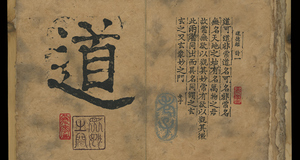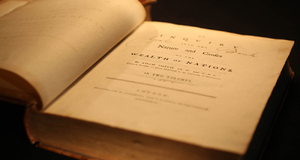Avoiding the Tyranny of Democracy: The Republican Ideal of a 'Mixed' Constitution
By
2015, Vol. 7 No. 04 | pg. 1/2 | » The assertion that unconstrained power brings with it inevitable corruption has occupied theorists since the first considerations of authority. That the nature of man in unconstrained assemblage will lead to a “tyrannical abuse of power” is a central assumption in the construction of political structure in the res publica (Chomsky 2007: 314). Arguments of how to best maintain and preserve order in this creed have consequently been tied to ideas of “freedom as non-domination” (Skinner 1990: 127). Stemming most notably from the works of Aristotle, later popularized by Polybius, the ‘republic’ is grounded equally in the concept of constraining the free citizenry from unlimited power, and in the prevention of “the government from degenerating into hateful tyranny” (Brett & Hamilton-Bleakley 2006: 46). These republican ideas have become so widespread in Western political thought that they have often been confused and distorted. To provide a guiding definition, the republic can typically be regarded as “a constitutionally limited government of the representative type with its powers divided between separate branches” (Casper 1988: 213). In this way, the republic transcends a simple representative democracy by specifically including a ‘mixed constitution’ limiting the power of ‘the majority’ and working for the ‘public good’ (Epstein 1988: 1639). Both historical and modern republics that are grounded in a constitutionally bound mixed government have been essentially successful in safeguarding democracy against tyranny.
Republicanism as an ideology will therefore be considered as being centrally concerned with “political participation, civic virtue and mixed constitution” (Laborde & Maynor 2009: 3). While it is noted that there exist a multitude of understandings regarding republicanism, republicanism will be dealt here in its central theme of “reconnecting liberty with the common good of the citizenship” (Honohan & Jennings 2003: 7). All characteristics addressed henceforth will be characterized under the term ‘republicanism’.
This essay argues that ‘checks and balances,' which are embedded within the republican ‘mixed constitution,' can best counteract tyranny as implicit within democracy functioning independently. This is analyzed under two major conditions from which tyranny arises in pure democracies, and subsequently the methods are considered via which the republican ‘mixed constitution’ counteracts these. Firstly, the ignorance of class differences that are necessitated in democracy’s pursuit of equality makes it vulnerable to class conflict. By institutionalizing class disparities into a balanced representative structure, republicanism attempts to preserve order between distinctive subdivisions of society. Secondly, the pursuit of complete ‘negative liberty’ in pure democracies is susceptible to anarchic disorder, as it disregards law. The responsibility to uphold law, typically maintained in the form of a constitution, by both the government and the individual is essential in a republic for the preservation of societal order. Before addressing these two areas, the key historical foundation of the ‘mixed constitution,' the ancient Roman Republic, will be analyzed as a prime illustration of the successes and failures of its application. Finally, presenting a case study of a modern republic, the United States of America, will be conducted to observe whether contemporary applications of a ‘mixed constitution,' including ‘checks and balances,' has successfully resulted in democracy avoiding tyranny. Addressing the roots of the republican system is essential before we can more thoroughly analyze its features. The rise of the Roman Republic was grounded on the conception that the state could not be separated from the people, and society was reliant upon a “partnership of citizens” (Swift 2013: 177). The idea that power should be shared amongst a citizenship is often regarded as a direct response to the tyranny of the monarchical system that ruled directly prior to the Republic (Terrenato & Haggis 2011: 219). However, the prioritization of shared power amongst the citizenship stems equally from concern regarding the “tyranny of the majority” (de Tocqueville 1831: 14). For example, Aristotle questions democracy as assuring absolute freedom, asserting that “a state which becomes progressively more and more of a unity will cease to be a state at all” (1992: 104). Sharing power in a citizenship was to act as a protection against the pitfalls of potential tyrannical rule, and was to be maintained primarily through mixing different forms of representative government. These separate forms typically incorporate elements of democracy, aristocracy and monarchy, each working as a “natural balancing mechanism” for the other (Hahm 2009: 178). This was to ensure that the res publica was in the possession of the people, and not overrun by the governing bodies. Dividing citizens into constituent elements and limiting the power of one body or individual over another limited abuses of power in the Roman Republic. Further, while the Roman model worked to neutralize the power of the majority, it was fundamentally dependent on the will of the people to participate. According to Machiavelli, such civic involvement is key to retaining our personal and collective liberty, and the subsequent protection of the common good of the state through “self government” (Skinner 2002: 182). The concept of ‘positive liberty,' grounded as a “civic virtue” in this sense can be traced back to the earliest phases of political participation in Roman civilization (Terrenato & Haggis 2011: 227). However, the ultimate goal of the system was not simply to encourage the act of civic involvement through political participation, which purely served as “a means or an intermediate end” (Brett & Hamilton-Bleakley 2006: 42). It was the protection of individual freedom inherent within the act of equal political representation, and the self-realization that accompanied it (Hall 1977: 305). Being more involved and thus aware of the political functioning of society allowed individual opposition to majority opinion, thus limiting their power. However, while these features are often associated with Rome at this time, it is important to keep in mind the disparity between text and reality. Firstly, it is difficult to assume that the two major classes classified under the constitution, patricians and plebeians, truly represented the whole population. Indeed, the liberty that these accounts are focused on “specifically excludes women and slaves” from political participation (Gardner 1986: 205). Moreover, the development of assemblies of both the ‘centuries,' which echoed the interests of the army, and the ‘tribes,' was clearly tied with the objectives of expanding Roman territory (Findlay 1996: 44). The provision to allow constitutional dictatorship in times of “war,” which occurred frequently, therefore questions the very sustainability of a ‘mixed constitution’ model (Rossiter 1948: 16). While such violent interruptions resulted in “a system frequently on the point of collapse,” the Roman Republic nonetheless survived for five hundred years, “not unchanging but always recognizable” (Terrenato & Haggis 2011: 231). In this way, writers from Cicero to the American founders advocated the general benefits of the republican model. Its resilience is grounded in the belief that it “provided the best imperfect solution to the problem of divergence of interest between governors and governed” (Goodhart 2000: 549). The Roman Republic can therefore be regarded as the foundational model for the systemized constraint of the tyranny of both a solely monarchic or democratic system. The first major condition under which a ‘mixed constitution’ safeguards democracy against tyranny is in its acceptance of class disparity. Democracy as a political form often prioritizes both “equality of opportunity” as well as an “equality of outcomes” (Bohman 1997: 280). Such a high a degree of expected unity amongst a citizenship is criticized in the republican tradition as being “undesirable and unrealistic” as it both “disregards diversity and attempts to manipulate the hierarchy of nature” (Brett & Hamilton-Bleakley 2006: 177). Ignorance of this hierarchy can devalue the political structure, as a “good political order should be modeled on the premise that citizens are not all equal in social power nor that they can be” (Urbinati 2006: 75). Class is represented in the republican system in both its mixed constitution and in the magistrates, or the modern equivalent thereof, in that it institutionalizes different societal subdivisions’ interests into the decision making process. This protects individual and group liberties by allowing equal representation, even if the classes are “naturally hierarchical” (Terrenato & Haggis 2011: 220). Subsequently, a mixed constitution represents “a middle course between extremes,” where the polity is balanced between the classes (Blythe 2014: 23). The function of balancing between classes takes form in the limitations provided by “checks and balances of the constitution and other governmental bodies” (Kramnick 1990: 145). When examining the ‘checks and balances’ inherent within the republican ‘mixed constitution,' it is important to consider that the terms have often been erroneously interchanged with one another. For example, Noah Webster’s classification of “checks and balances,” one of the first to unite the two in a common turn of phrase, resulted in a complex amalgam of two separate theories, which, until the middle years of the 18th century, were assumed to be incompatible (Wootton 2006: 217). In its original meaning, ‘checks’ worked simply to “prevent an action, or exercise a veto” (Ibid). Polybius similarly thought only in terms of balance in which “each separate power counteracts the rest,” so that no power may have “absolute mastery and domination over others” (Paul, Wirtz & Fortmann 2004: 32). As such, ‘checks’ function to accommodate natural class conflict by ensuring that each representative power withheld the right to veto the decision of the other. For instance, the 80th Republican Congress of America exercised its right of veto over President Truman’s decision to extend restrictions on unions’ ability to strike. Further, the separation of powers implicit within classical republicanism as a tradition “which conceives the constitution as a form of government,” ensured that no governmental form may dominate. The uniqueness of these assurances within the republican model works to contain the tyrannical power of any form or class over another, including that of the majority. The role of law in the republican model further acts to protect the citizenry against the tyranny of unconstrained freedom. The popular democratic pursuit of “the preservation of the negative liberty of atomic individuals” is highly criticized in republicanism (Bohman 1997: 12). According to republicans, the pursuit of ‘negative liberty,' defined as “to act unimpeded or unconstrained by other human agents,” will inevitably fall to tyranny as its lacks any level of sufficient constraint (Goodin, Pettit & Pogge 2012: 689). If liberty, according to the neo-Roman republican theory, is simply “the absence of the capacity to tyrannize,” then there must be some constraint to such a capacity (Sunstein 1988: 1578). The ultimate constraint of power is attained in the maintenance of legislation and law, represented in a legally binding constitution (Hanson 2012: 514). It is the law, and adherence to the law by all, that allowed true “libertas,” or freedom, as it inhibited the capacity to reach unlimited power (Terrenato & Haggis 2011: 222). Equal political participation in the construction of law meant, “law was above society; it could be discovered or restated, but the king, like all others, was bound to it” (Tamanaha 2004: 18). The incentive to uphold these constraints, according to Plato, is that as the people are responsible for its construction and preservation, it “will bind the people to it and make them more willing to defend it” (Blythe 2014: 7). However, the concept of constitution has expanded wince its ancient conception. The ancient understanding consisted of a constitution as “a particular form of government that incorporate certain ways of sharing and balancing power” (Laborde & Maynor 2009: 159). The modern conception expands this so that “constitutions are entrenched written documents that sets our fundamental law of polity” (Ibid). For example, the introduction of a legally binding constitution in the Czech Republic in 1992 has resulted in “increased adherence to the basic principles of institutional accountability” (Deegan-Krause 2006: 68) A legally binding constitution thereby reconciles freedom and authority, avoiding the tyranny of extremes of either, because citizens having increased transparency into the laws they are required to obey.Continued on Next Page » Suggested Reading from Inquiries Journal
Inquiries Journal provides undergraduate and graduate students around the world a platform for the wide dissemination of academic work over a range of core disciplines. Representing the work of students from hundreds of institutions around the globe, Inquiries Journal's large database of academic articles is completely free. Learn more | Blog | Submit Latest in Political Science |


















